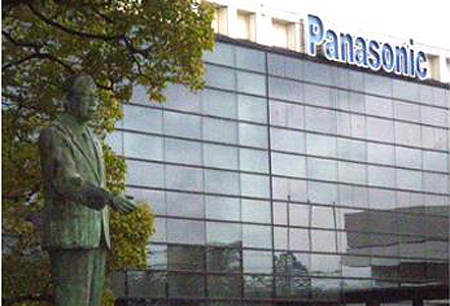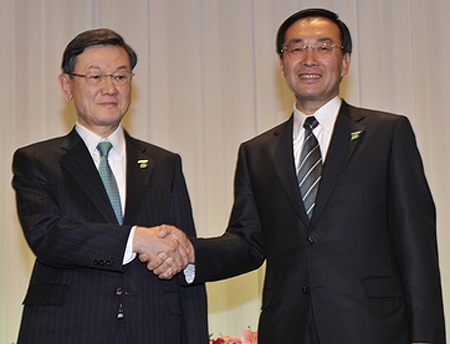JAPAN: Panasonic planning further job cuts, this time at HQ and in mobile phone division
Headquarters workforce could be halved in order to streamline decision-making; 1000 jobs could go in smartphone division as more operations moved abroad


Panasonic is reported to be taking a long hard look at its corporate headquarters in Osaka as the next stage of money-saving and business restructuring is planned.
Until now, its HQ division has been unaffected by business-slimming cuts made elsewhere in the company; now it looks like up to 4000 of its 7000 central staff positions could be axed.
Panasonic's headquarters staff, which accounts for some 7% of the company's total headcount in Japan, has been the hub of all decision-making in the company since 2000, when then president Nakamura broke down a near-70-year policy of autonomous business units.
This, Nakamura thought, caused the units to adopt a 'silo' mentality rather than sharing idea, so the decision-making authority of headquarters staff was increased, along with the number of people employed at central level.
However, the thinking seems now to be that too much has to be referred back to HQ, creating decision-making delays: 4000 headquarters staff work in IT, procurement, quality control and admin, with another 2000 in R&D and 1000 in more production technology.
It's thought all these sectors will be targeted, perhaps even to the extent of spinning off R&D and production technology.

Panasonic's outgoing president Ohtsubo (left) with president-elect Tsuga
Get the What Hi-Fi? Newsletter
The latest hi-fi, home cinema and tech news, reviews, buying advice and deals, direct to your inbox.
Panasonic has already reduced its workforce by around 30,000 in the past year, and now employs 330,000 worldwide, but incoming president Kazuhiro Tsuga, taking over from current boss Fumio Ohtsubo (who will become chairman) on June 27, needs to make more cuts to tackle the current losses being incurred.
In the last financial year Panasonic clocked up record red ink to the tune of Y772.1bn (£6.3bn), not least due to the restructuring involved in halting plasma TV panel production at its huge Amagasaki plant.
Staffing was cut in the loss-making TV division, and the white goods operations (fridges, washing machines, etc) of its subsidiary Sanyo were sold off to Chinese company Haier.
Its current aim is to show a Y50bn (£408m) group profit in the current financial year, through these changes and other, as yet unannounced, measures.

And despite having ambitions in the smartphone market – it recently launched its Eluga waterproof model (above) in Europe –, Panasonic is though to be aiming to shed 1000 posts from its systems and communication division, which is responsible for phones and associated devices.
This will be done by phasing out production of mobile phones in Japan, with its Kakegawa plant in Shizuoka prefecture halting production by this summer, and moving manufacturing to lower-cost overseas facilities.
The company aims to triple current smartphone sales to 15m units by 2014-15, with more than half of those sales outside Japan.
Andrew has written about audio and video products for the past 20+ years, and been a consumer journalist for more than 30 years, starting his career on camera magazines. Andrew has contributed to titles including What Hi-Fi?, Gramophone, Jazzwise and Hi-Fi Critic, Hi-Fi News & Record Review and Hi-Fi Choice. I’ve also written for a number of non-specialist and overseas magazines.
